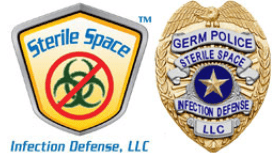The New York Times recently published an article about Colgate University’s athletic department’s battle against the MRSA bacteria (Methicillin-resistant Staphylococcus aureus) in its sports and athletics facilities. The MRSA bacteria causes a contagious disease that is spread through direct contact with an infected person and is an extremely serious concern for gyms, locker rooms, training facilities, and sports facilities. MRSA is resistant to many antibiotics, can leave the infected severely disabled and can even be fatal. As is the case with many bacterial illnesses, prevention is key. Here’s some of what the article has to share about what the University learned about how to prevent MRSA, and how to prevent MRSA from coming back after it has been detected:
The first thing Colgate University did was purchase a sophisticated $14,000 machine that used ozone gas, not water or detergent, to disinfect all its athletes’ gear. An ice hockey player had come down with a staph infection, and Colgate, fearing the severe and sometimes fatal form of it known as MRSA, was not going to take any chances
The university didn’t stop at gassing gear.
Out went the shared bars of soap in Colgate showers. Water bottles were sterilized nightly. Athletes in contact sports got two or three sets of equipment so one set could always be sanitized. Even the university’s furry mascot costume was regularly blasted with ozone gas.
That was a decade ago, and Colgate, like many schools, is still fighting the germ. This year, among other measures, it unveiled plans for a cutting-edge system that would zap lockers rooms with a decontaminating fog of hydrogen peroxide and silver to leave an anti-bacterial coating on every surface.




